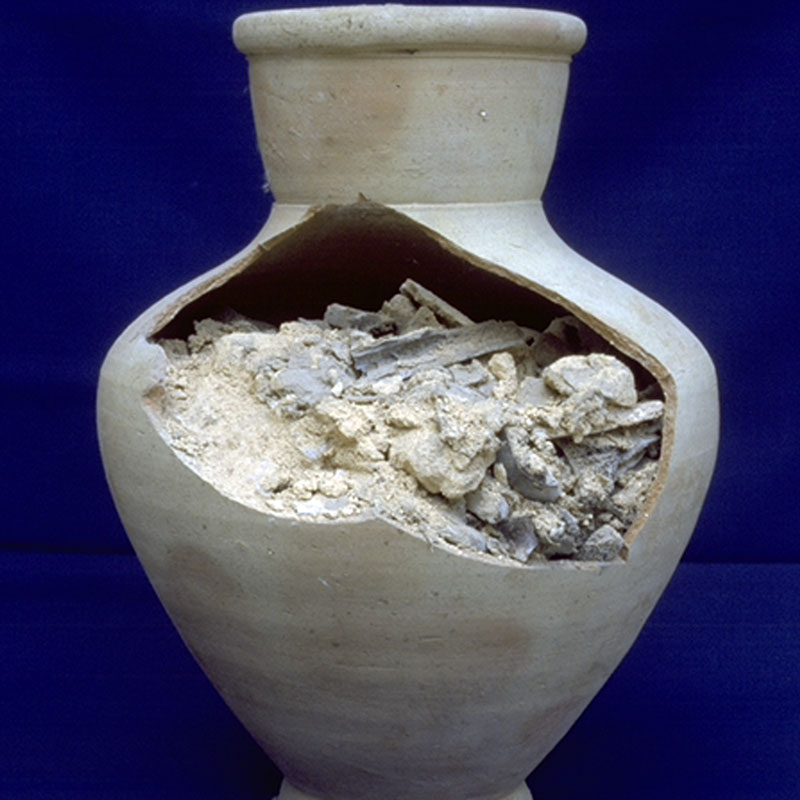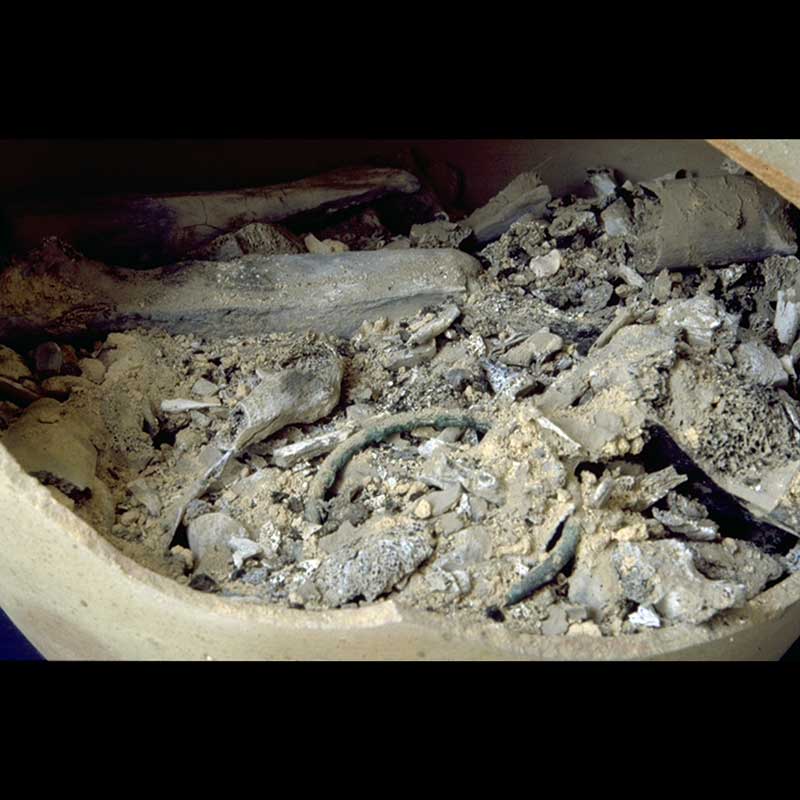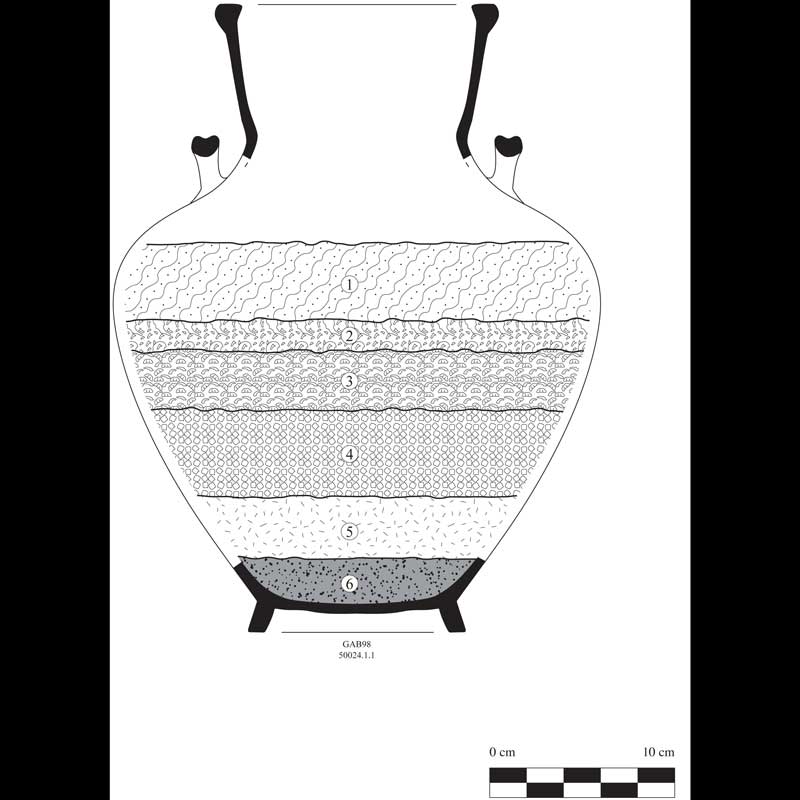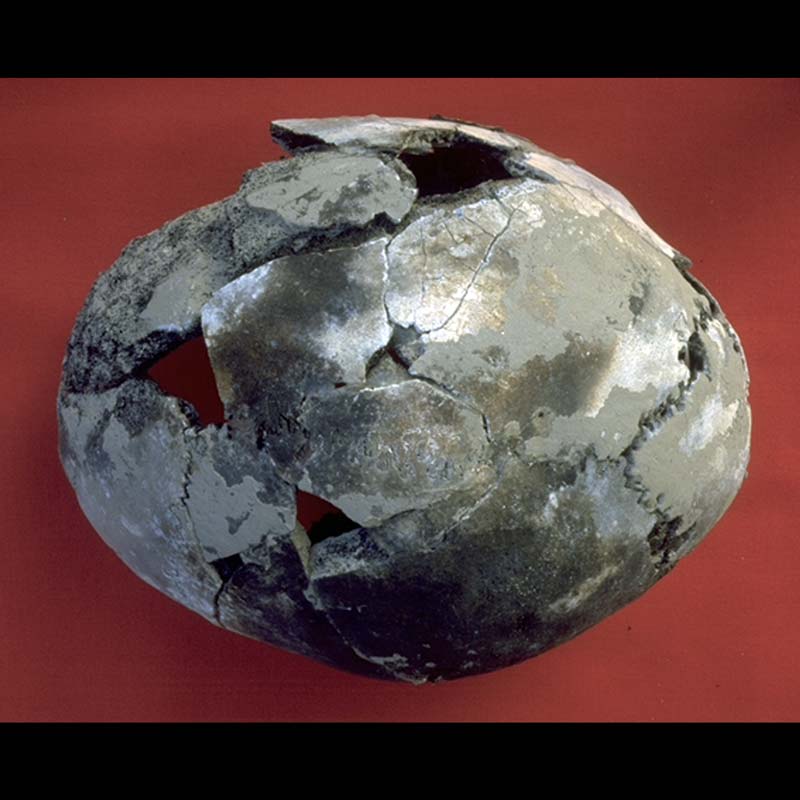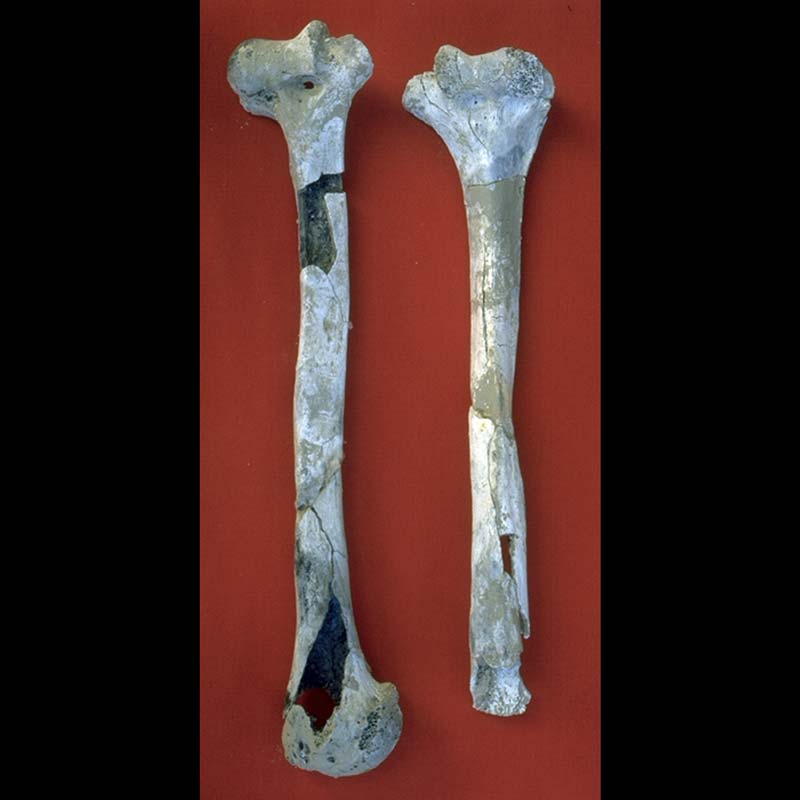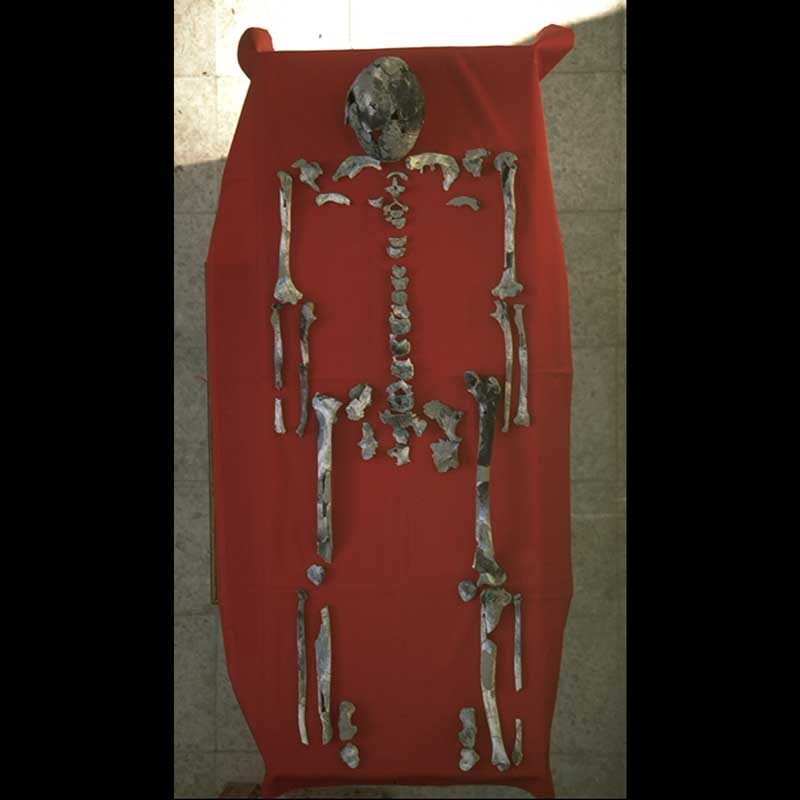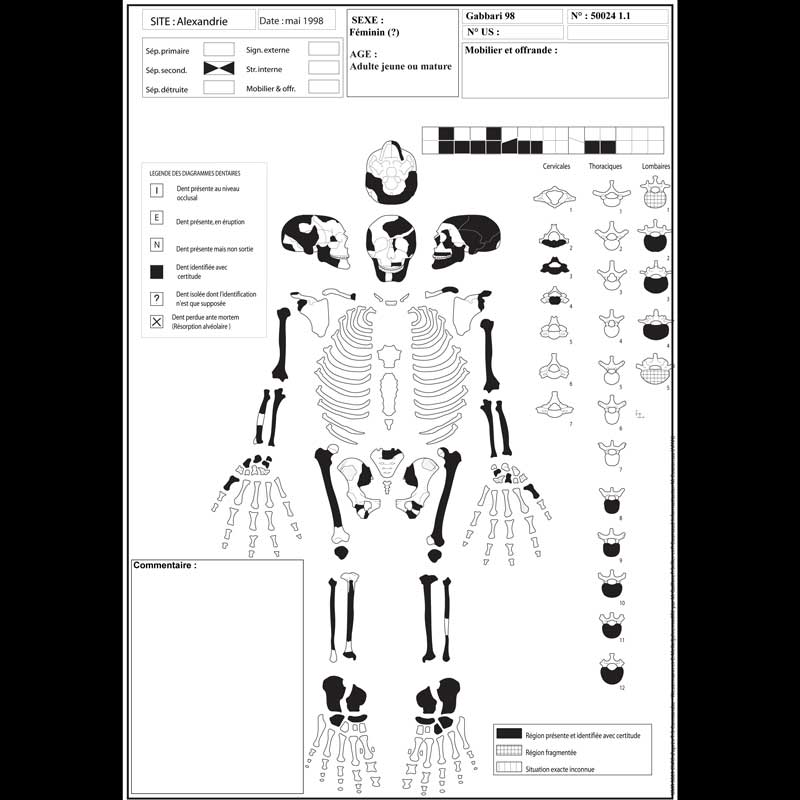Cremation in antiquity
Team leaders : Paul Bailet, Patrice Georges et Cécile Harlaut
The excavation and study of cremations was a particularly ambitious project begun during the excavations of the Gabbari Bridge site. In keeping with other studies arising from this site, it is shedding new light on issues relating to funerary practices in the Ptolemaic capital. The Gabbari complex yielded thousands of bones, both scattered and connected, in different burial contexts on the surface and in hypogea, as well as Hadra hydriai and other types of cinerary vessels. What is to be made of these vases, whose name comes from the eponymous site of a huge Hellenistic necropolis found in a village near Alexandria? They have been carefully preserved as found and they remind us that a part of Hellenistic Alexandrian funerary practices, generally considered in terms of burials, is little known if at all. The large-scale archaeo-anthropological study that was undertaken on the Gabbari necropolis could not ignore a part ancient Alexandria’s population, albeit small, on the pretext that this particular type of burial was relatively rare in Alexandria as in Egypt.
Following the example of what has been standard in France for decades, the CEAlex is, for the first time in Egypt, applying a modern approach to the archaeological study of cremations. The project, led by Gilles Grévin and Paul Bailet, focuses on the stratigraphic excavation of urns, making it possible to position the bone elements identified by anatomical part within the vase and in relation to each other, as well as to other objects present, even though the bones may be in fragmentary form since they were recovered from the pyre after cremation. The two researchers have applied a protocol developed in France in the 1980s, taking full advantage of the development of preventive archaeology in France. This modus operandi filled an obvious methodological gap. Whilst focusing on the remains of the deceased, which remain the central element of the tomb, this approach allowed us to attempt to access the original image of the pyre, of which no trace has ever been found in Alexandria. The bones, of course, but the slightest vestige, be it a fragment of an object, a piece of charcoal or any other element of natural origin, provides an opportunity to discuss the temperature of the flames, the gestures made on the pyre during and after cremation, and so on. This project has involved several missions to the CEAlex to examine vases from the Graeco-Roman Museum, most of which came from other Alexandrian sites long since excavated.
The initial results opened up new avenues of research, which specialists from other disciplines were able to follow, and the project was revitalised in recent years by the discovery and excavation in 2012 of a hydria still in context in its closed niche during a rescue operation by the Egyptian Ministry of Antiquities. This intervention effectively relaunched the current programme, supported by INRAP. The aim is to fully publish the 49 deposits, review the current state of research, examine what is known about cremation in general and Hellenistic practice in Alexandria in particular, and also to study the typology of the containers and the contexts in which the urns were found.
Further reading
G. Grévin, P. Bailet, « Fouille d’hydries funéraires à crémation d’époque ptolémaïque (Tombe B1) : Étude ostéologique », in J.-Y. Empereur, M.-D. Nenna (éd.), Nécropolis 1: Tombes B1, B2, B3, B8,Études Alexandrines 5, Le Caire, 2001, p. 291-294.
G. Grévin, P. Bailet, « Une pratique funéraire insolite en Egypte : la crémation à l’époque des Ptolémées (IVe-Ier siècle av. J.-C.), Archéologia 381, 2001, p. 48-53.
G. Grévin, P. Bailet, « La crémation en Égypte au temps des Ptolémées », La mort n’est pas une fin : pratiques funéraires en Égypte d’Alexandre à Cléopâtre, Calatogue d’exposition, Musée de l’Arles antique, 2002, p. 62-65.
P. Bailet, P. Georges, C. Harlaut, La crémation hellénistique et romaine à Alexandrie (Égypte) : de la fouille des urnes à la restitution des pratiques funéraires, Études Alexandrines, sous presse.

